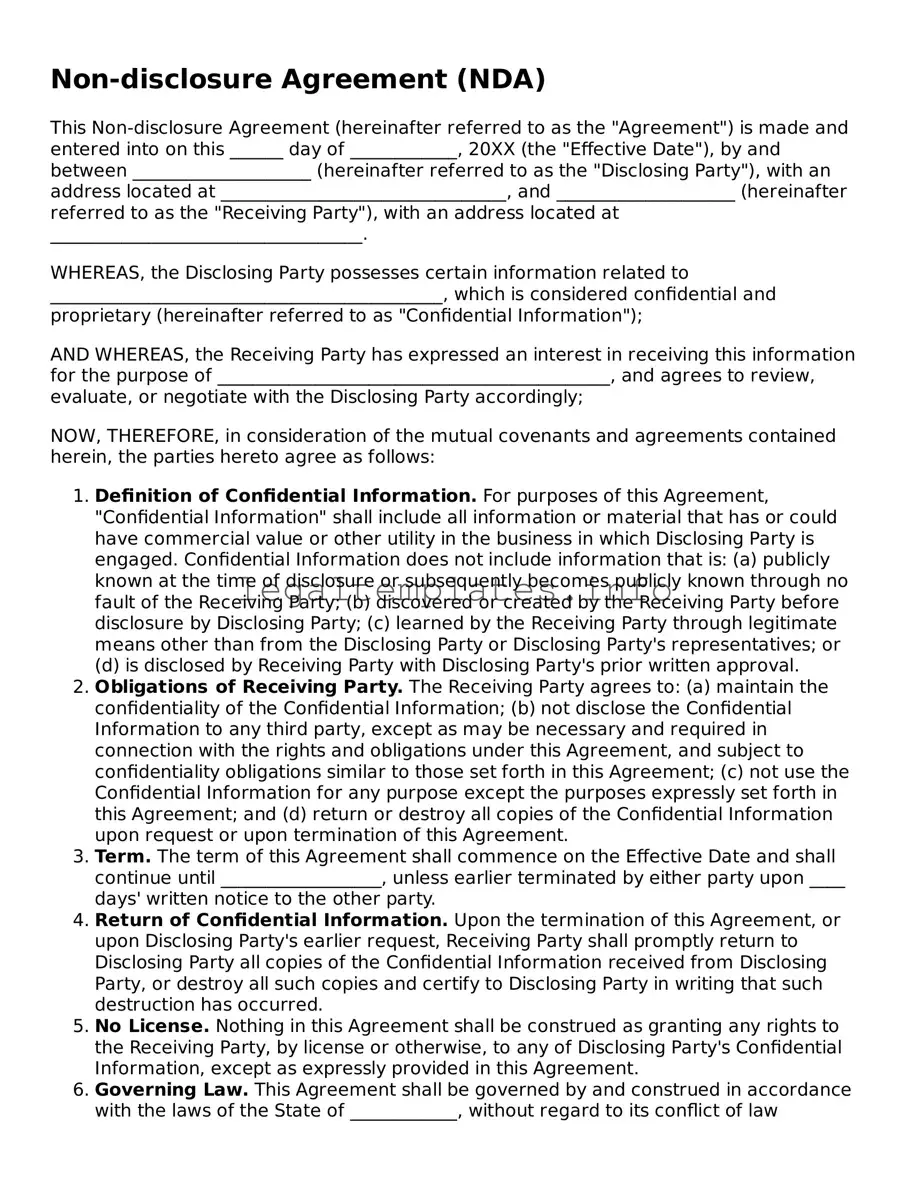A Confidentiality Agreement is quite similar to a Non-disclosure Agreement (NDA) as both serve to protect sensitive information shared between parties. While an NDA might be used in a broader array of situations, a Confidentiality Agreement is specifically tailored to ensure that confidential information remains private. Both documents outline the information considered confidential, the duration of the obligation, and the consequences of breaching the agreement.
An Employment Contract often contains clauses similar to those found in an NDA, especially regarding the confidentiality of company information. Employees are typically required to sign these as part of their employment terms to prevent sharing proprietary information or trade secrets with competitors. This parallel ensures the company's innovations, strategies, and competitive advantages are safeguarded, much like an NDA protects shared sensitive information between two parties.
Intellectual Property (IP) Assignment Agreements share common ground with NDAs because they both concern the protection and control over certain types of information. While an IP Assignment Agreement transfers ownership of creations, innovations, or discoveries from one party to another, an NDA might be used to safeguard the details of the IP being discussed or developed prior to the formal assignment.
A Contractor Agreement can closely resemble an NDA when it involves proprietary or sensitive information. Contractors or freelancers who work with businesses often need access to confidential company data to complete their tasks. The inclusion of non-disclosure clauses in their contracts prevents them from leaking any of that information, mirroring the function and purpose of an NDA.
Partnership Agreements, when forming a business venture between two or more parties, often incorporate elements similar to NDAs. These agreements make it clear that any business plans, financial details, or proprietary information shared among the partners cannot be disclosed. This mutual confidentiality is critical for trust and the successful operation of the partnership, echoing the protective essence of an NDA.
Non-Compete Agreements, while primarily focused on preventing an individual from entering into or starting a similar profession or trade in competition against another party, also share similarities with NDAs in the aspect of protecting business interests and secrets. They often come paired to ensure that upon departure, a former employee or partner does not exploit proprietary information for competitive purposes.
Consulting Agreements may also have sections that are very much like NDAs because consultants are often privy to confidential information about the business strategies, operations, or technologies of the company hiring them. To safeguard this sensitive information, the agreements include confidentiality clauses that bar the consultant from sharing any information learned during their engagement.
Licensing Agreements, which allow one party to use another's intellectual property, patents, trademarks, copyrights, or technology, include confidentiality clauses akin to those in an NDA. These clauses are essential for protecting the licensor's IP while it is being used by another party, emphasizing the protection of disclosed information during the term of the agreement.
Merger and Acquisition (M&A) Agreements often necessitate the exchange of confidential information similar to NDAs to evaluate the potential transaction. Parties involved must share sensitive financial documents, strategies, and other critical confidential information to assess the feasibility and terms of the merger or acquisition, necessitating strong confidentiality clauses to protect each party's interests.
Lastly, Joint Venture Agreements might require a level of confidentiality comparable to that in NDAs, as these ventures usually involve sharing critical strategic, financial, or technological information between two or more businesses. To protect each entity's competitive edge, these agreements strictly regulate the disclosure of such information, embodying the spirit of non-disclosure to ensure mutual trust and cooperation.
